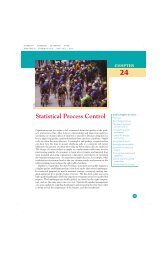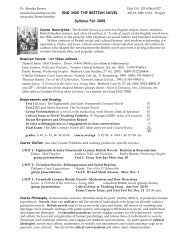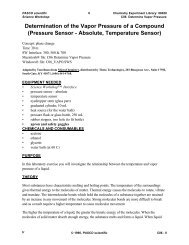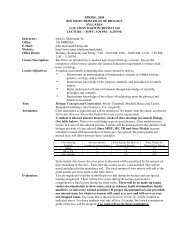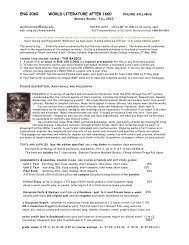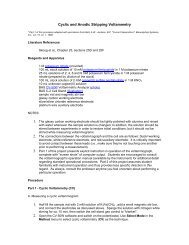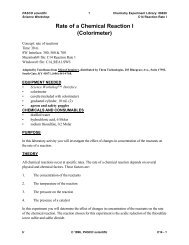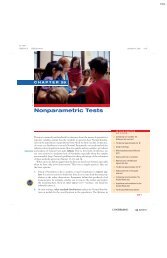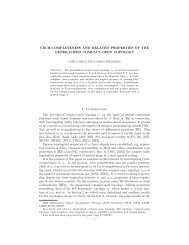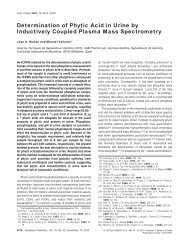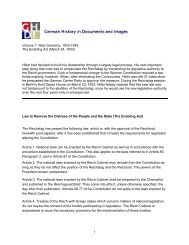CHAPTER 27 ⢠Statistical Process Control
CHAPTER 27 ⢠Statistical Process Control
CHAPTER 27 ⢠Statistical Process Control
Create successful ePaper yourself
Turn your PDF publications into a flip-book with our unique Google optimized e-Paper software.
<strong>27</strong>-34 <strong>CHAPTER</strong> <strong>27</strong> • <strong>Statistical</strong> <strong>Process</strong> <strong>Control</strong><br />
sample, just by chance. So the variation in the process output will be greater than the<br />
variation within samples. To estimate the natural tolerances, we should estimate from all<br />
80 individual monitors rather than by averaging the 20 within-sample standard deviations.<br />
The standard deviation for all 80 mesh tensions is<br />
s 38.38<br />
(For a sample of size 80, c 4 is very close to 1, so we can ignore it.)<br />
We are therefore confident that almost all individual monitors will have mesh tension<br />
x 3s <strong>27</strong>5.065 132138.382 <strong>27</strong>5 115<br />
We expect mesh tension measurements to vary between 160 and 390 mV. You see that<br />
the spread of individual measurements is wider than the spread of sample means used<br />
for the control limits of the x chart. ■<br />
The natural tolerances in Example <strong>27</strong>.10 depend on the fact that the mesh<br />
tensions of individual monitors follow a Normal distribution. We know that the<br />
process was in control when the 80 measurements in Table <strong>27</strong>.1 were made, so we<br />
can graph them to assess Normality.<br />
APPLY YOUR KNOWLEDGE<br />
<strong>27</strong>.25 No incoming inspection. The computer makers who buy monitors require that<br />
the monitor manufacturer practice statistical process control and submit control<br />
charts for verification. This allows the computer makers to eliminate inspection of<br />
monitors as they arrive, a considerable cost saving. Explain carefully why incoming<br />
inspection can safely be eliminated.<br />
<strong>27</strong>.26 Natural tolerances. Table <strong>27</strong>.6 (page <strong>27</strong>-31) gives data on hospital losses for<br />
samples of DRG 209 patients. The distribution of losses has been stable over time.<br />
What are the natural tolerances within which you expect losses on nearly all such<br />
patients to fall? DRG2<br />
<strong>27</strong>.<strong>27</strong> Normality? Do the losses on the 120 individual patients in Table <strong>27</strong>.6 appear to<br />
come from a single Normal distribution? Make a graph and discuss what it shows. Are<br />
the natural tolerances you found in the previous exercise trustworthy? DRG2<br />
DON’T CONFUSE CONTROL WITH CAPABILITY!<br />
A process in control is stable over time. We know how much variation the finished<br />
product will show. <strong>Control</strong> charts are, so to speak, the voice of the process<br />
telling us what state it is in. There is no guarantee that a process in control<br />
produces products of satisfactory quality. “Satisfactory quality” is measured<br />
by comparing the product to some standard outside the process, set by<br />
technical specifications, customer expectations, or the goals of the organization.<br />
These external standards are unrelated to the internal state of the process, which<br />
is all that statistical control pays attention to.



